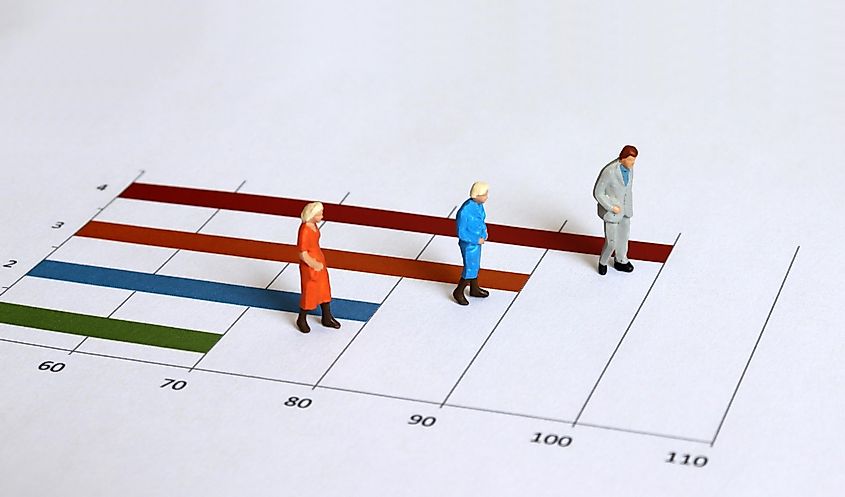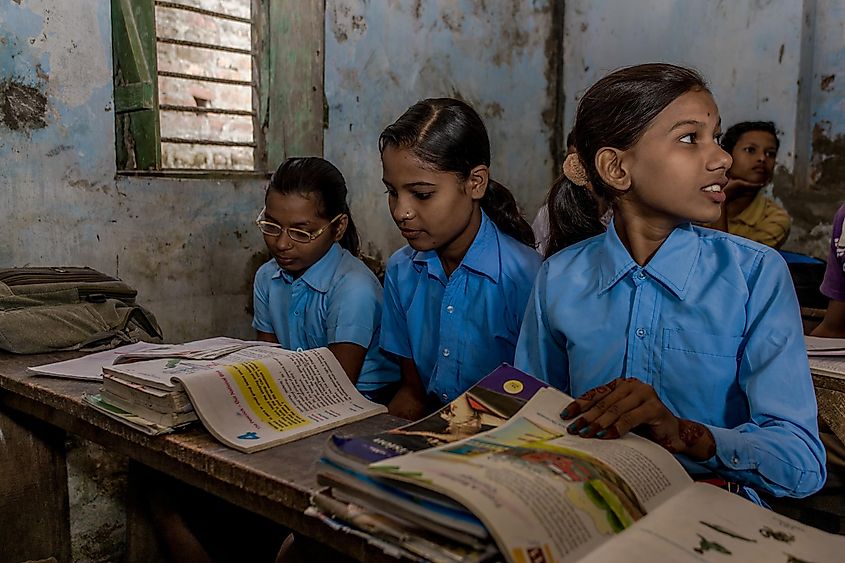What Is A Developing Country?

- There is no universal definition of what constitutes a developing country.
- Overall, developing countries tend to have significantly lower economic and social indicators than developed countries on average.
- The United Nations' Human Development Index (HDI) is the most comprehensive measure of a country's development, integrating both social and economic measurements.
- Most of the world's countries are still considered developing countries.
There is no universally agreed-upon way of defining what a developing country is. Different definitions of what constitutes a developing country have been formulated based on different criteria. Sometimes, it is economic criteria that are used. In other cases, social indicators, such as life expectancy and education levels are used to determine if a country is developed or developing.
Generally speaking, developing countries have both lower economic and social indicators overall than developed countries. Also, some developing countries are farther on their way to becoming developed countries than others. Indeed, it can certainly be argued that labeling countries either developed or developing oversimplifies the individual situations of each country.
The Characteristics Of Developing Countries
GNI Per Capita

As previously mentioned, there are several ways to differentiate a developing country from a developed country. One of those ways is based purely on economic output. The World Bank in particular determines a country’s development status based on GNI (gross national income) per capita.
It should be noted, however, that the World Bank does not classify countries as simply developed or developing. Instead, the international organization employs four levels of classification: low income, lower-middle income, upper-middle income, and high income. Many if not most of the countries generally considered to be developed countries are classified by the World Bank as being high-income countries, which all have a GNI per capita of at least $12,536 USD. This is the classification that countries like the United States, Canada, Australia, and countries in Western Europe fall into.
The problem with using one economic criterion for differentiating developing countries from developed countries is that it ignores several other factors that can determine a country’s development status. For instance, according to the World Bank, Costa Rica is one level lower than the US in terms of development. Whereas the US is a high-income country, Costa Rica is an upper-middle-income country. Yet, life expectancy in Costa Rica is slightly higher than in the US. According to statistics published by the United Nations Population Division, the average American lives 79.11 years, while the average Costa Rican lives 80.94 years.
In fact, several countries that have a lower GNI per capita than the US have higher life expectancies. These include Cuba, the Maldives, Barbados, Poland, and Lebanon, all of which are classified as upper-middle-income countries. This example proves that using one economic indicator to determine a country’s development status does not tell the whole story. After all, how can the Maldives, a country that is considered a developing country by other measures, have a higher life expectancy than a country like the US, which is universally considered to be a developed country?
Industry And Urbanization

There are other economic factors that can be used to distinguish between a developing country and a developed country. For instance, developing countries tend to have more people in their labor forces working in primary industries like agriculture and mining. In Nigeria, for example, about 35% of the country’s workforce is involved in agriculture. In contrast, less than 11% of the US workforce works in agriculture. Measuring the amount of agriculture as a percentage of a country’s GDP (gross domestic product) can also indicate how developed a country’s economy is. For instance, agriculture makes up 40% of Ethiopia’s GDP, but just 5% of Germany’s GDP.
In general, developed economies will have large service sectors, high-tech sectors, and significant exports of high-end products like computers and other advanced technology. A country’s level of urbanization can also indicate that it is a developing country. In Afghanistan, for instance, just 26% of its people live in urban areas, whereas 88% of Denmark’s population lives in cities.
Life Expectancy

Economic factors alone, however, cannot define a country as either developed or developing. Thus, in order to define what a developing country is, as opposed to a developed country, it is vital to use other measurements of a more social nature. As demonstrated previously, life expectancy can be used as a measure of development.
One characteristic that all developed countries have is a high life expectancy, though as illustrated previously, life expectancy alone does not make a country developed or developing. It is true, however, that most developing countries have lower life expectancies in comparison to most developed countries.
Education

Developing countries also tend to have lower levels of education when compared to developed countries. For example, whereas Americans have an average of 12 years of schooling, people in the West African countries of Mali and Guinea-Bissau have less than one year of schooling on average. In China, which has the world’s second-largest economy but is still considered a developing country, the average person receives 6.4 years of schooling, which is less than other developing countries like Thailand and Jordan, but more than the Southern African countries of Botswana and eSwatini.
The Human Development Index
The best way to define a country as either developed or developing is to use both economic and social measurements. One method of combining both types of measurements is the one used by the United Nations, known as the Human Development Index (HDI). A country’s HDI is calculated based on four measurements: mean years of schooling, expected years of schooling, life expectancy at birth, and GNI per capita. An HDI of 1 constitutes a perfect score. A score of 0.800 is considered very high, between 0.700 and 0.799 is high, 0.550 to 0.699 is medium, and anything below 0.550 is low. Most developed countries have a score in the very high range.
As of 2019, the Scandinavian country of Norway had the highest HDI score, 0.957, which essentially makes it the most developed country in the world. Rounding out the top ten were Ireland, Switzerland, Hong Kong, Iceland, Germany, Sweden, Australia, the Netherlands, and Denmark. Less than half of the countries and other jurisdictions measured by the UN HDI have scores of 0.800 or higher, which means that most of the countries of the world are still considered developing countries. According to the HDI, the infamous distinction of being the world’s least developed country goes to the West African country of Niger, which has an HDI score of 0.394. In fact, the ten countries with the worst HDI scores are all located in Africa.











